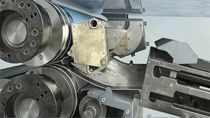Hardware Implementation of High-Performance FFT Algorithms on FPGAs
DSP algorithms are challenging to implement on hardware, and hardware design engineers have little to no opportunity for design exploration. DSP HDL Toolbox™ helps engineers make design decisions early in the development cycle using pre-verified, hardware-ready Simulink® blocks that simulate hardware implementation of the algorithm. Using the fast Fourier transform block, learn:
- How to quickly change implementation options for low resource usage and latency designs
- How to change incoming streaming data from sample- to frame-based processing
- How to generate readable and synthesizable VHDL or Verilog using HDL Coder capabilities
Published: 22 May 2022





